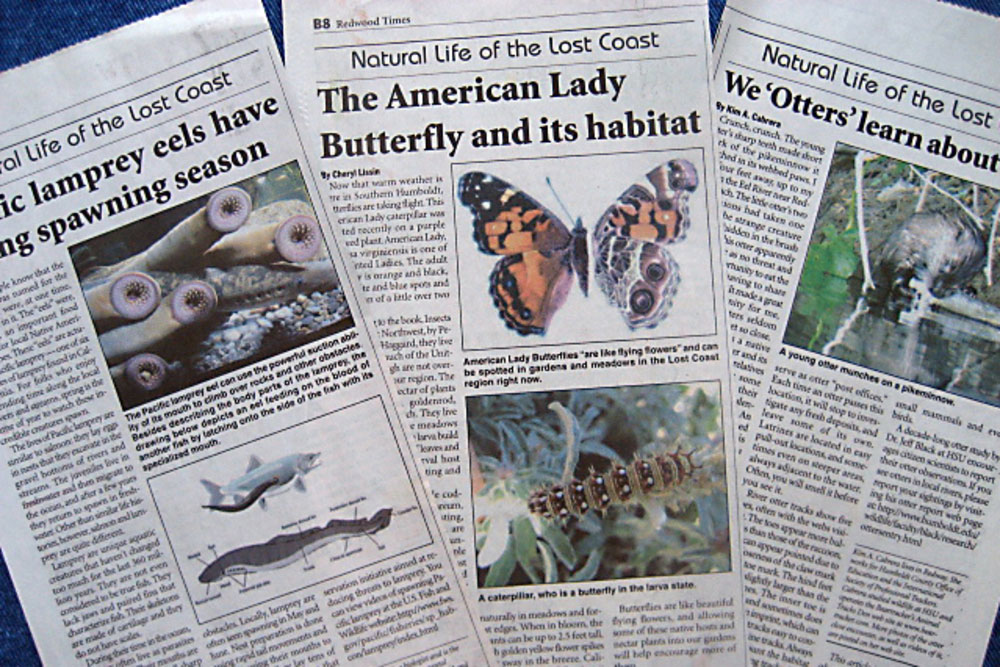Western Fence Lizard aka Bluebellies

My brother and I filled our terrarium with blue-bellies. These lizards are alert and fast but we had a secret weapon: a fishing pole. We tied one end of fishing line to the final loop on the pole, made a noose and ran the line to the base of the pole. We sneaked up on the lizard from behind, lowered the noose over his head and gently tightened the line. Capture! This method also worked for snakes. Sceloporus occidentalis, as the Western Fence Lizard is officially known, is a small lizard, less than 8 ½ “ long, with very rough scales on its upper surface. Their background color is light brown with blotches, bands, or ragged brown stripes. Turn the lizard over to see the amazing blue stripes on its belly and throat. Males have the deeper blue, females lighter and juveniles often none at all. During courtship and territorial disputes, the males do pushups to show off their colors. Presumably, deeper blues indicate a stronger, healthier and more virile male. Males fight to defend their territory but we never saw this behavior in our terrarium even though it was crowded with blue-bellies. Maybe this was because none of the males thought it was territory worth fighting for. Also, the terrarium lacked any suitable elevation where a male could do pushups to show off. Mating occurs March through June, depending on the altitude. Two to four weeks later the female digs a small pit in soft moist soil and lays a clutch of 3 – 17 eggs. She may lay several more clutches. The eggs will hatch in about 60 days, from July to September. Fence lizards are common and frequently seen, as they are found in many habitats, from forests to grasslands to scrub. They love to bask in the sun in an elevated open place, such as a fence or a rocky outcrop or your woodpile. This makes them an easy target for hawks and snakes, sometimes shrews and kids with fishing poles. Speed and vigilance are their usual defenses, but they can sacrifice their tail if necessary. The tail will twitch after separation, distracting the predator. It takes energy to regrow a tail, so detaching one is not done lightly by the lizard. Lizards are cold-blooded, so they need to bask in the sun to warm up, and hide in cool places, crevices or under logs or brush, when too warm. They eat bugs and spiders, ticks and scorpions. And they are very valuable in lowering the incidence of Lyme disease in areas where they are found. The bacterium which carries Lyme disease is carried by the western black-legged tick. Very young ticks frequently attach to fence lizards, especially around the mouth. A protein in the lizard’s blood (which the tick ingests) kills the bacterium, so the tick will be disease-free when it infects its next host. Treasure your blue-bellies! Article by Eve Broughton. Eve lives in Whitethorn and was educated at UC Berkeley ]]>
